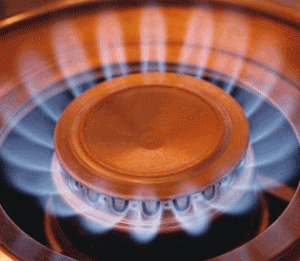 Natural gas increased on Monday amid speculation for a record-high drop in US gas inventories in the week ended January 10, following last weeks freezing cold temperatures. The energy source was also supported by long-term weather forecasting models that called for below-normal temperatures across many densely-populated US areas, which will increase demand for the power-station fuel as Americans crank up the heating.
Natural gas increased on Monday amid speculation for a record-high drop in US gas inventories in the week ended January 10, following last weeks freezing cold temperatures. The energy source was also supported by long-term weather forecasting models that called for below-normal temperatures across many densely-populated US areas, which will increase demand for the power-station fuel as Americans crank up the heating.
On the New York Mercantile Exchange, natural gas for delivery in February surged by 3.81% to trade at $4.208 per million British thermal units by 13:40 GMT. Prices hit a session high at $4.218 per mBtu, while day’s low was touched at $4.119 per mBtu. The energy source declined 5.7% in the last 5-day period, after losing 0.4% in the previous week. However, prices settled last year 26% higher, the best performance since 2005 and second straight annual advance.
According to a report by Gelber & Associates Corp., a consultant in Houston, cited by Bloomberg: “U.S. gas inventories probably fell by 286 billion cubic feet in the week ended Jan. 10, compared with the five-year average decline of 159 billion”. Data from the EIA showed the largest withdrawal on record was 285 billion for the week ended December 13th. The Energy Information Association will release its weekly US gas inventories report on January 16th.
Short-term weather forecast
NatGasWeather.com reported on January 13th that the recent warmer-than-normal weather trend will revert to colder-than-normal, with numerous chilly outbreaks sweeping through the Midwest and Plains and into the eastern US with areas of wintry weather. However, in the western US, high pressure formation will provide a return to mild and dry conditions for the next 7-10 days.
Later today, areas of light to moderate rainfalls are expected across all of the East coast and light snowfall in New England, while heavier rainfall is expected over the Southeast. According to the website the first cold blast wont be impressive, but later in the week stronger, more intense cold fronts will follow. The first cold blast is predicted to arrive on Tuesday/Wednesday, the second Thursday into Friday and the last Saturday into Sunday. Each blast may leave a few inches of snow, especially across the Midwest and Northeast, but until now, it doesnt look exceptionally heavy or impressive.
Chilly long-term weather forecast
NatGasWeather.coms extended forecast for the week ended January 27th, called for low pressure over the eastern half of the country and high pressure over the western US. The cold weather will maintain moderate to high natural gas and energy demand over much of the central and eastern US. Every few days, reinforcing shots of cold air may sweep through the Midwest and parts of the Plains into the East. Some of these might push deep into the Southeast, with temperatures likely to be freezing all the way to the Gulf of Mexico coastline.
According to AccuWeather.com, on January 18th readings in Chicago may bottom at 11 degrees Fahrenheit, 7 below average, while the low in Columbus will hit 13 degrees, beneath the average of 22 degrees. Temperatures in Indianapolis are expected to bottom at 14 degrees Fahrenheit, 6 below normal.
When cold weather is expected, natural gas surges as increased electricity demand to power air-conditioning calls for more supply of the fuel, which is used for a quarter of U.S. electricity generation. Above-average readings in the winter season have the opposite effect. Consumption usually picks up from November through March. According to the Energy Information Administration, power generation accounts for 32% of U.S. gas demand and 49% of U.S. households use the energy source for heating.




